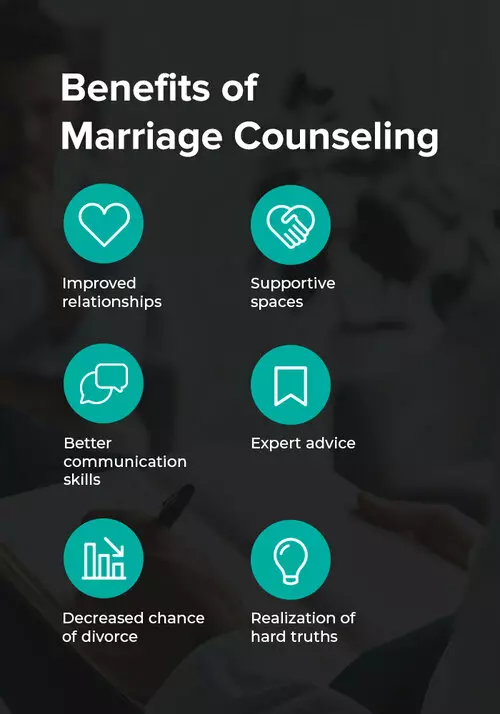3 Easy Facts About Aim Point Counseling Shown
3 Easy Facts About Aim Point Counseling Shown
Blog Article
An Unbiased View of Aim Point Counseling
Table of ContentsAll About Aim Point CounselingNot known Facts About Aim Point CounselingThe Single Strategy To Use For Aim Point CounselingOur Aim Point Counseling DiariesThe Aim Point Counseling StatementsGetting The Aim Point Counseling To Work
The longitudinal design involves a pre-treatment study and two follow-up surveys at 3- and 12-months post-intervention. The research is established in 8 Relationships Australia Victoria centres, across cosmopolitan, outer suburban areas, and regional/rural websites. Relationships Australia, a non-government organisation, is the largest copyright of pair coaching and connection solutions in Australia.
These high rates of relationship break down have actually been regularly associated with adverse wellness effects for both grownups and kids complying with divorce/separation.
What Does Aim Point Counseling Do?
Longitudinal research studies also suggest that youngsters of separation have a higher occurrence of psychological conditions, drug and alcohol use, and dangerous sexual behaviour [7] Although the results of separation and splitting up can be harmful, research study suggests that high relationship disharmony in intact couples is also likely to have adverse outcomes.
Research to date has actually determined both couple and private variables that may contribute to partnership dissonance. These include relationship contentment and dedication at the couple level, and anxiety at the specific degree.
The Ultimate Guide To Aim Point Counseling
Connection contentment has actually been one of the most typical outcome variable determined in even more than 200 examinations of pair therapy [11,12] Research studies have actually located considerable enhancements in relationship contentment from pre- to post-treatment [13,14] and throughout one to 2 years complying with coaching [15] In these researches, relationship satisfaction was most often evaluated using the Dyadic Modification Scale (DAS) [16] While many research studies suggest improvements in connection contentment following pair coaching, they are restricted by the samples and measures used, greatly temporary follow-up time frames, and analyses that do not account for the dyadic nature of pair data., is one more typically checked out connection outcome.
To sum up, study indicates that couple-specific variables along with individual variables might forecast the outcomes of pair therapy and connection services. The causal instructions of these connections, however, is much less clear. These observations are important, given that, to justify and lead the application of connection solutions such as pair counselling, empirical evidence needs to explore both the end results of partnership services and the aspects that forecast effective therapy.
, at the very least in some European nations.

We presently understand little about the accounts of pairs that seek connection education compared to those that seek partnership coaching, or the outcomes of these programs. Unscientific proof suggests that there might be considerable distress amongst at the very least some pairs seeking partnership education. Connection education and learning programs differ from couple counselling as they are normally very structured, carried out in teams, and focus on a mixture of 4 components; awareness, comments, cognitive change, and abilities training [45]
Examine This Report about Aim Point Counseling
Responses entails news individuals completing questionnaires about their relationship (e.g. procedures of social issues), and obtaining details on what their scores indicate. Cognitive-behavioural methods promote changing cognitions to assist in favorable relationships.
These meta-analyses highlight constraints in the existing literary works on partnership education. This example account might not represent clients that generally provide for relationship education.
All about Aim Point Counseling

Really little research has analyzed the relative advantages of pair counselling and relationship education programs. As clients are likely to self-select right into these solution kinds, it is unclear whether characteristic connection distress profiles existing per solution type, or certainly whether there is a communication between providing account, solution kind and result.
(https://aim-point-counseling.webflow.io/)
Hence, we have included a 12-month follow-up to assess longer-term patterns and impacts. The research study utilizes a number of standard result measures since some previous investigations have actually been criticised for their absence of standard evaluation [50] Lastly, making use of statistical analyses that think freedom of information, such as t-tests, or ANOVAs, has actually been widespread in previous research studies [ 44,49]
We recommend to utilise multi-level statistical modelling treatments that regulate for the inter-dependence of couple data to examine any therapy results. The particular aims of the ECC study are to: 1. Map accounts of clients looking for community agency-based pair counselling vs. connection improvement programs in terms of socio-demographic and relationship signs (such as partnership contentment, relationship commitment, social troubles, and reasons for going to), as well as health and wellness (such as clinical depression, general well-being) and wellness solution usage (eg.
Figure out whether pair counselling and relationship education and learning solutions enhance three- and twelve-month end results for partnership contentment, dedication, and anxiety, using analytical evaluations appropriate to pair information. trauma counseling. Identify the loved one payments of customer aspects (individual and couple) and therapy/education variables to results at 3- and 12-months, and to sustainability of end results over time.
The Best Strategy To Use For Aim Point Counseling
Multi-level modelling to establish pre-post differences, regulating for dyadic (pair) level. To add to the literature analyzing the efficiency of community-based pair coaching. The results will certainly assist scientific decision-making in community-based relationship solution setups, and expert training. 3. To determine the relative payments of client/couple and therapy aspects to outcomes at 3- and 12-months, and to sustainability of outcomes in time.
Report this page